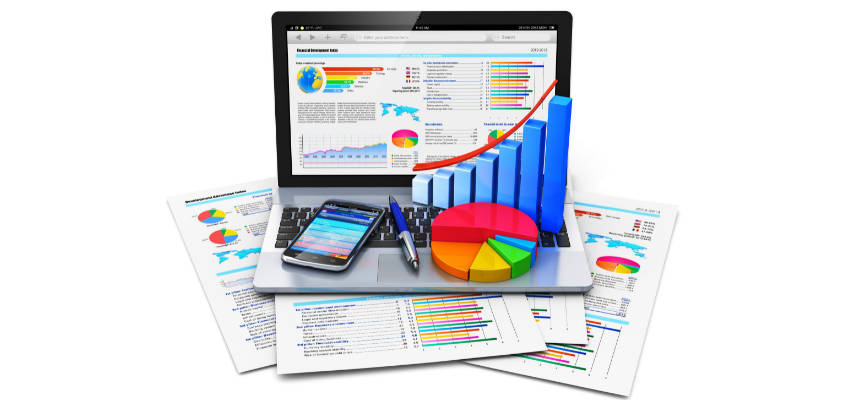Show:
Top 9 Tips to Optimize Workflow from Business Analysis to App Prototyping
In the dynamic landscape of today’s digital market, a robust online presence is paramount for any business’s success. Our guide delves into the intricacies of business analysis, offering a comprehensive strategy to streamline workflow and enhance efficiency. From dissecting market trends to crafting seamless app prototypes, this guide is designed to empower your business with a strategic edge. Embrace a future-ready approach as we navigate the intricacies of optimizing your digital footprint and refining your workflow for unparalleled success.

1. Clear Business Objectives
Learning how to analyze a business and prototyping endeavors, it is imperative to establish precise business objectives that seamlessly integrate with the overarching mission and vision of the organization. Achieve clarity and focus by:
- Defining of key market segments and target demographic group.
- Defining measurable performance indicators to measure success.
- Alignment of goals with the long-term goals of the organization.
- Prioritizing user experience enhancement for sustained customer satisfaction.
- Optimization of internal processes to improve work efficiency.
This strategic roadmap ensures that every step taken in the analysis and prototyping journey is purposeful, contributing directly to the broader success and sustainability of the business.
2. Smart Data Collection Strategies and Analysis
In the pursuit of meaningful insights, employ efficient data collection methods that encompass both quantitative and qualitative approaches. Simplify the process with:
- Surveys and Feedback:
- Deploy user-friendly surveys to capture quantitative data.
- Encourage open-ended feedback for qualitative nuances.
- Web Analytics:
- Leverage tools for quantitative insights on user behavior.
- Identify patterns and preferences through website analytics.
- Focus Groups:
- Conduct qualitative discussions for in-depth understanding.
- Extract nuanced insights from participant interactions.
- Social Media Monitoring:
- Analyze quantitative metrics and qualitative sentiments.
- Harness social media platforms for real-time feedback.
Strategically combining these approaches provides a comprehensive pool of data, facilitating informed decision-making at the analysis stage.

3. Engage Key Stakeholders
To foster success in both business analysis and app prototyping, prioritize the active involvement of key stakeholders. This ensures a holistic approach, incorporating diverse perspectives and requirements. Simplify the engagement process by:
- Regular Meetings: Schedule frequent check-ins to discuss progress and gather feedback.
- Collaborative Workshops: Host interactive sessions to ideate and align objectives.
- Feedback Loops: Establish continuous channels for stakeholders to provide insights.
- User Testing Sessions: Include stakeholders in prototyping evaluations for firsthand feedback.
By actively engaging stakeholders, you enhance project understanding and foster a collaborative environment, aligning the final product with collective expectations and ensuring its success in the market.
4. Technology Integration
Incorporate cutting-edge technologies into your data analysis and prototype development process to improve workflow efficiency. Embrace innovation with:
- Advanced Analytics Tools:
- Utilize state-of-the-art analytics tools for robust data interpretation.
- Extract valuable insights swiftly and accurately.
- Cloud-Based Prototyping Platforms:
- Opt for platforms that facilitate collaborative and accessible prototyping.
- Streamline development processes with cloud-based solutions.
- IoT Integration:
- Explore the potential of the Internet of Things (IoT) for data enrichment and connectivity. Capitalize on the benefits of mobile networks to ensure seamless communication between IoT devices, fostering a connected ecosystem and extending the reach of your data insights.
By staying at the forefront of technology, you not only streamline operations but also position your business for sustained growth and adaptability in the ever-evolving digital landscape.
5. Cross-Functional Collaboration
Promote seamless collaboration between business analysts and prototypers to facilitate a smooth transition of insights and requirements into the prototyping phase. Enhance synergy through:
- Regular Communication Channels: Establish open lines for ongoing dialogue between teams. Ensure continuous information exchange.
- Joint Workshops and Brainstorming Sessions: Conduct collaborative sessions to bridge understanding gaps. Encourage collective idea generation for comprehensive solutions.
- Unified Documentation Practices: Implement shared documentation platforms for clarity. Ensure all stakeholders have access to updated project details.
By fostering a cohesive collaboration, you maximize the efficiency of the entire process, ensuring that insights seamlessly translate into effective prototypes, aligning with business goals.
6. Optimize for Mobile Platforms
In today’s mobile-centric landscape, prioritize workflow optimization for mobile platforms to cater to the expanding user base effectively. Tailor your approach with:
- Responsive Design: Craft prototypes with designs that adapt seamlessly to various screen sizes and prioritize a user-friendly experience across mobile devices.
- Performance Testing: Conduct rigorous testing to ensure app functionality on diverse mobile platforms and address any performance issues to guarantee a smooth user experience.
- Mobile-Centric Features: Integrate features that align with mobile user behavior and preferences and enhance accessibility for on-the-go users through intuitive design.
By optimizing for mobile platforms, you not only meet user expectations but also position your app for success in the dynamic and mobile-driven digital landscape.

7. Continuous Improvement
Cultivate a culture of continuous improvement by establishing iterative feedback loops between stakeholders, business analysts, and prototypers. Use agile methodologies for continuous improvement using:
- Regular Review Meetings: Schedule periodic sessions to discuss progress and gather feedback.
- Adaptive Prototyping: Implement an iterative approach, allowing for swift adjustments based on feedback.
- Transparent Communication Channels: Foster open communication for real-time issue resolution.
- Agile Development Cycles: Embrace short development cycles with regular reassessment. Prioritize flexibility to adapt to evolving project requirements.
By promoting continuous improvement, you not only enhance the quality of deliverables but also ensure that your project remains aligned with evolving stakeholder expectations and industry dynamics.
8. Performance Metrics and Monitoring
For effective evaluation in business analysis and app prototyping, establish Key Performance Indicators (KPIs) as benchmarks for success. Simplify the monitoring process by:
- Identifying Measurable Goals:
- Clearly define specific, achievable objectives.
- Ensure metrics align with broader business objectives.
- Regular Monitoring and Analysis:
- Consistently track and analyze KPIs throughout the project.
- Use insights to adapt strategies and enhance overall performance.
By defining and regularly assessing KPIs, you gain actionable insights, fostering informed decision-making and continuous improvement.
9. Thorough Documentation Practices
Facilitate smoother collaboration by implementing thorough documentation practices in both business analysis and prototyping processes. Streamline knowledge transfer within the team through:
- Detailed Process Documentation:
- Clearly outline each step in the analysis and prototyping workflows.
- Provide a reference for team members, ensuring consistency.
- Accessible Documentation Platforms:
- Utilize user-friendly platforms for easy access to information.
- Enable team members to navigate and contribute seamlessly.
By prioritizing comprehensive documentation, you enhance team efficiency and ensure a shared understanding of processes and project details.
In conclusion, mastering the art of how to analyze a business, from prioritizing stakeholder engagement and leveraging advanced technologies to embracing iterative improvements, lays a solid foundation for successful app prototyping. By incorporating these nine tips, businesses can navigate the complexities of the digital landscape with precision, ensuring their strategies are not only insightful but also agile in adapting to evolving market demands.

 Return to Previous Page
Return to Previous Page








